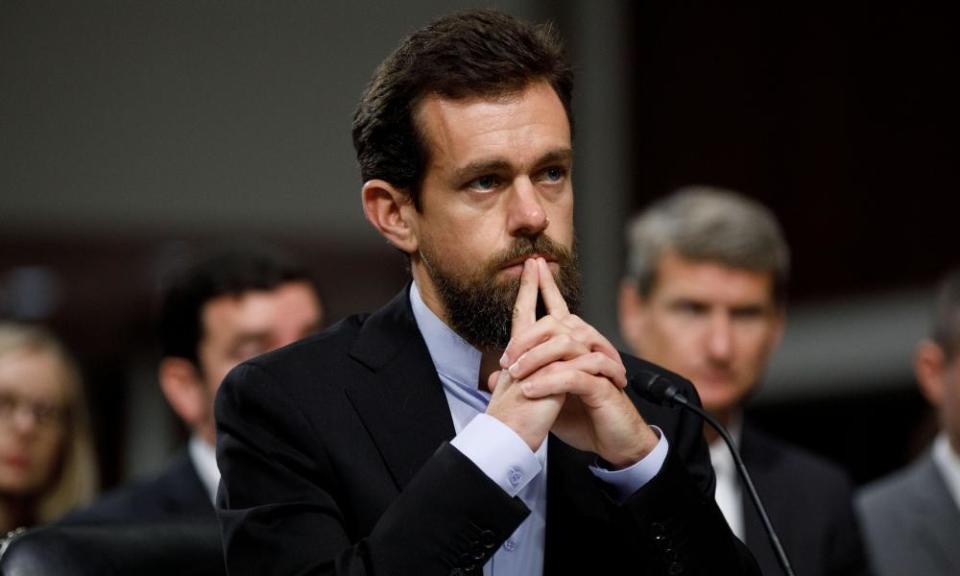Does the Twitter CEO’s departure signal a platform identity crisis?

So Jack Dorsey has stepped down as the CEO of Twitter. This means that the company has had four CEOs in its 15 years of existence, with Dorsey occupying the role twice, but in all that time it’s had only one business model, which may largely explain his departure.
There are interesting parallels between Dorsey’s relationship with the company he co-founded and Steve Jobs’s with Apple, for both were ousted at one stage by their board colleagues and were then brought back to rescue said colleagues from their incompetence.
And the parallels don’t stop there. During their sojourns in the wilderness, both men founded successful new companies, in Dorsey’s case the payments firm Square, in Jobs’s case the computer firm NeXT Inc, after which he went on to transform the Lucasfilm graphics company into Pixar. For both men, these were profitable periods of exile: Square is now valued at $100bn; Jobs sold Pixar to Disney for $7.4bn and got a seat on the Disney board. Which only goes to show that sometimes being fired is the best thing that can happen to a visionary.
The idea that became Twitter came from Dorsey’s brainwave in 2006 that if one could broadcast one’s SMS messages then that would be quite a thing. It was an instant hit, not least because most people already knew about text messaging and so the new service hit the ground running. In short order it morphed into a global wire service for ordinary people and, in the 2016 US presidential election, into a megaphone for a particularly adept and unscrupulous user of the medium.
Much of the advertising that crops up in one’s Twitter feed is basically virtue-signalling by corporate brands
So why is the guy who created this astonishing service stepping down? The proximate reason is that he’s being hassled by a couple of wealthy “activist” investors who can’t understand a) how Dorsey could be both CEO of Twitter and of Square (good question, IMHO); and b) why a service that has become such a central part of the networked public sphere isn’t attracting more users or making more money. The number of monthly active users (MAU) on Twitter has been pretty stagnant for a while, and although its annual revenues ($3.72bn in 2020) might seem substantial to those who live in the real world, in the reality distortion field of Silicon Valley they are viewed as small change. As one way of placating these impatient activists, Dorsey gave each of them a seat on the company’s board in return for substantial injections of capital.
But it’s clear that what they are pushing for is a change in Twitter’s business model. Like the other social network companies, Twitter makes its money from advertising, but because it doesn’t have any direct user-to-advertiser link, most of the advertising is brand, rather than product, related. Which means that much of the advertising that crops up in one’s Twitter feed is basically virtue-signalling by corporate brands.
It’s not clear how this can be changed without radically changing the nature of Twitter, thereby losing its uniqueness. The veteran tech analyst Ben Thompson had an interesting way of putting this in his newsletter the other day by comparing Twitter with Instagram. Both follow a broadcast model but their respective default media are different: for Twitter it’s text, for Instagram it’s photographs.
The implications of this are vast, argues Thompson. “Sure, you may follow your friends on both, but on Twitter you will also follow news-breakers, analysts, insightful anons, joke tellers and shit posters. The goal is to mainline information and Twitter’s speed and information density are unparalleled by anything in the world. On Instagram, though, you might follow brands and influencers and your chief interaction with your friends are stories about their Turkey Day exploits. It’s about aspiration, not information, and the former makes a lot more sense for effective advertising.”
Putting it another way, the mental states of users are different on the two platforms. Instagram is a way of combating boredom, endlessly scrolling in the hope of finding something interesting. A user in that frame of mind is more likely to be tempted by the prospect of an impulsive purchase.
Twitter users, however, are not bored. Instead, they’re combative, annoyed, outraged or looking for a fight or a joke. Often, my Twitter feed brings to mind a story I once heard from a Scottish comedian about Sauchiehall Street on Friday nights in the old days: he described a scene in which one drunk has grabbed another by the lapels, banging his head against the wall and shouting: “For the 20th time, Jimmy, there are 31 islands in the Greek archipelago.”
As Dorsey headed for the exit the other day, he dropped a delightfully wicked thought. “There’s a lot of talk about the importance of a company being ‘founder-led’. Ultimately, I believe that’s severely limiting and a single point of failure.” The funny thing is that while that may or may not apply to Twitter, that idea of “a single point of failure” very definitely does apply to another social network. And Mark Zuckerberg isn’t going anywhere, not even if the wretches on his board of directors thought it was time for him to spend more time with his money.
What I’ve been reading
Keep it civilised
Is Society Coming Apart? is an instructive Guardian Long Read by the Harvard historian Jill Lepore.
Future uncertain
Learning from Machine Learning is a terrific, wise essay by David Weinberger on Aeon.
Does not compute
How AI Is Reinventing What Computers Are is an insightful piece in MIT Tech Review by Will Douglas Heaven. The usual caveat – for “AI” read “machine learning” – applies, but otherwise it’s spot on.

 Yahoo Finance
Yahoo Finance 